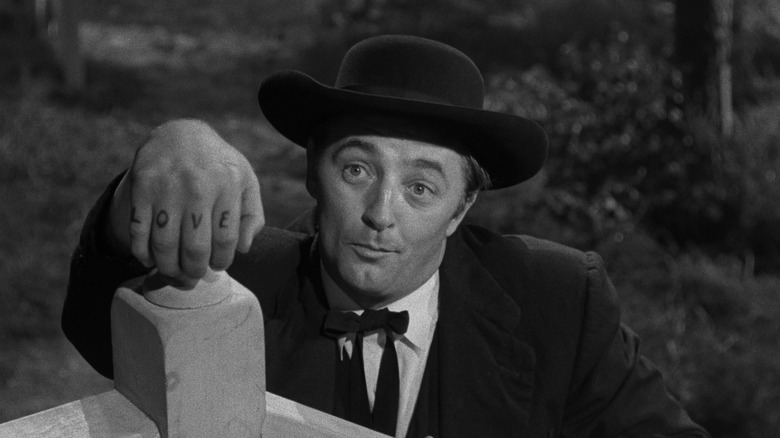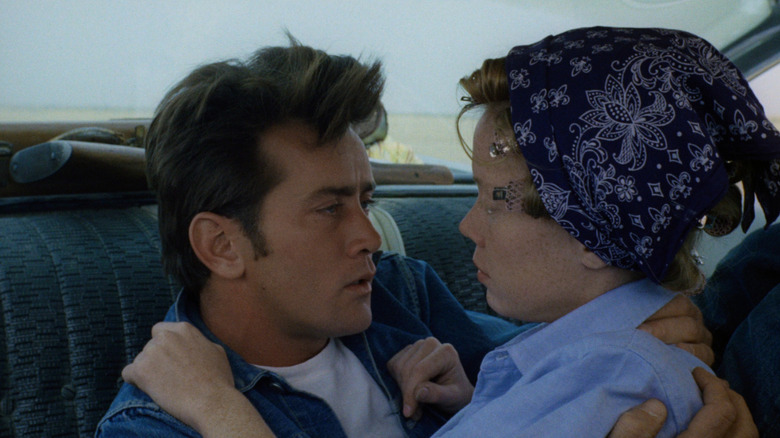The films that inspired Bruce Springsteen in Deliver Me From Nowhere are true classics

The question of where artists get their ideas from is an age-old question, and it’s almost as ubiquitous as the answers are mysterious. Most artists don’t have a succinct answer to this question, and that’s understandable, since everyone’s ideas tend to arise from their personal tastes, life experiences, etc. Yet what may not often be talked about is how often artists draw inspiration from other art, especially in different mediums. Paintings can inspire books, novels can inspire movies, movies can inspire music, etc.
The latter example is exactly the case with Bruce Springsteen’s 1982 album “Nebraska,” and it’s something that filmmaker Scott Cooper makes sure to dramatize in his film “Springsteen: Deliver Me From Nowhere.” It’s a film about The Boss’s struggle with depression and his traumatic past while making “Nebraska,” detailing how the very making of the album is what allows Bruce (played by Jeremy Allen White) to accept these feelings within himself. As part of this process, Cooper shows how films helped Springsteen find and refine these inner feelings, and the director uses two examples in particular: Terrence Malick’s “Badlands” and Charles Laughton’s “Night of the Hunter.” The first film is what sets Springsteen on the path to “Nebraska,” while the second depicts Bruce’s complicated relationship with his father, Douglas (Stephen Graham). Both films happen to be certified American classics, films that are themselves about men in trouble. As such, they not only inform Springsteen as a person but also as a character, and thus influence “Deliver Me From Nowhere” as a film itself.
Robert Mitchum in Night of the Hunter Provided Springsteen with a Skewed Look at American Values
In “Deliver Me From Nowhere,” Cooper shows us black-and-white flashbacks of Springsteen’s childhood, where young Bruce (Matthew Anthony Pellicano) is alternately abused and confused by his alcoholic father. One particular day, when Douglas is sober, he insists that Bruce skip school and come with him to the local movie theater, where “Night of the Hunter” is playing. Through this flashback, Cooper examines how this viewing of the film sparked a number of conflicting thoughts and emotions in the young Springsteen. Was Douglas’ insistence on taking Bruce to this film some sort of confession or implicit apology for his violence? Or is Douglas unaware of the inference that can be made between him and Robert Mitchum’s character, the “preacher” Harry Powell?
Although “Night of the Hunter” was not a direct influence on “Nebraska” per se, the film and Mitchum’s performance were a defining moment for Springsteen in general, which is why Cooper included it in the film. The iconic scene where Powell explains his hand tattoos — one pair of knuckles has “LOVE” inked, while the other has “HATE” — clearly made a lasting impression on the musician, as it is referenced in the lyrics of the song “Cautious Man” from Springsteen’s 1987 album “Tunnel of Love.” To the extent that “Hunter” references “Nebraska” and Springsteen’s mental state during the creation of that album, it’s likely that Laughton’s southern gothic tone is part of the inspiration for the quality that Springsteen so desperately wants to capture aurally. The way “Night of the Hunter” distorts traditional American values—masculinity, religion, and genteel society—undoubtedly also served as fuel for Springsteen’s songs.
Badlands’ lyricism allowed Springsteen to get more personal
Even more important for Springsteen and “Nebraska” is “Badlands,” to which “Deliver Me From Nowhere” devotes an entire sequence. After Springsteen discovers a television broadcast of Malick’s film within the film, he begins watching it on repeat while visiting the local library in Colts Neck, New Jersey, and searching for reviews and articles about it. Through these, he learns that the real Nebraskan killers, Charles Starkweather and Caril Ann Fugate, served as inspiration for the fictional Kit (Martin Sheen) and Holly (Sissy Spacek) in Malick’s film. Springsteen then wrote a song about the real-life killers originally called “Starkweather” before renaming it “Nebraska” and changing the lyrics from third person to first person. Cooper’s film implies that this change (making the lyrics more personal instead of giving them distance) represents the moment when Springsteen begins to investigate his own inner problems rather than running away from them.
It’s fitting that “Badlands” is the driving force behind “Nebraska” and “Deliver Me From Nowhere” itself. Not only does it continue the American Gothic theme that permeates both the album and the film, but it’s also a perfect blend of idyllic heartland lyricism with something rotten and sinister underneath. For Springsteen, it represents his childhood and his connection to his roots, something he is very nostalgic and proud of, even if the toxicity of his abuse cannot be repressed or denied.
There is an old adage attributed to Pablo Picasso: “Little artists borrow; great artists steal.” One of its meanings concerns how great artists draw inspiration from great art. “Deliver Me From Nowhere” demonstrates that with these two classic films, we hope that movie fans and musicophiles will also find themselves inspired by Springsteen’s films and songs.
“Springsteen: Deliver Me From Nowhere” is now playing in theaters.






